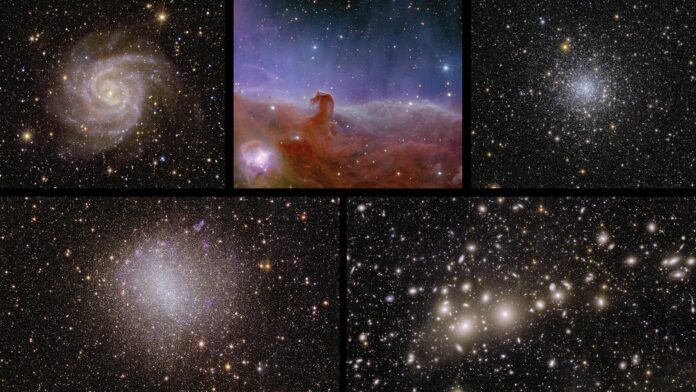Approximately 95% of the Universe seems to consist of these enigmatic, “dark” entities. However, because their presence only very slightly alters the appearance and motions of the things we can see, we cannot comprehend what they are.
ESA’s Euclid space mission, dark Universe detective has to investigate how dark matter and dark energy. Euclid will measure the morphologies, velocities, and distances of billions of galaxies out to 10 billion light-years during the following six years. It will create the biggest cosmic 3D map ever produced by doing this.
Recently, ESA‘s Euclid space mission revealed its first full-color images of the cosmos, showing its full potential. Before this, no telescope could create such razor-sharp astronomical images across such a large patch of the sky and look so far into the distant Universe. These five images illustrate Euclid’s full potential; they show that the telescope is ready to create the most extensive 3D map of the Universe yet to uncover some of its hidden secrets.
ESA Director of Science, Professor Carole Mundell, said, “Euclid will, for the first time, allow cosmologists to study these competing dark mysteries together. Euclid will leap in our understanding of the cosmos as a whole, and these exquisite Euclid images show that the mission is ready to help answer one of the greatest mysteries of modern physics.”
The images were never seen before- containing so much detail. They reveal many previously hidden features in well-known regions of the nearby Universe, and they are even more exquisite and precise than one could have imagined.
The images are of:
The Perseus Cluster of galaxies
This amazing photo taken by Euclid is revolutionary in the field of astronomy. The image features about 100,000 more galaxies in the background, each with up to hundreds of billions of stars, including 1000 galaxies that are part of the Perseus Cluster.
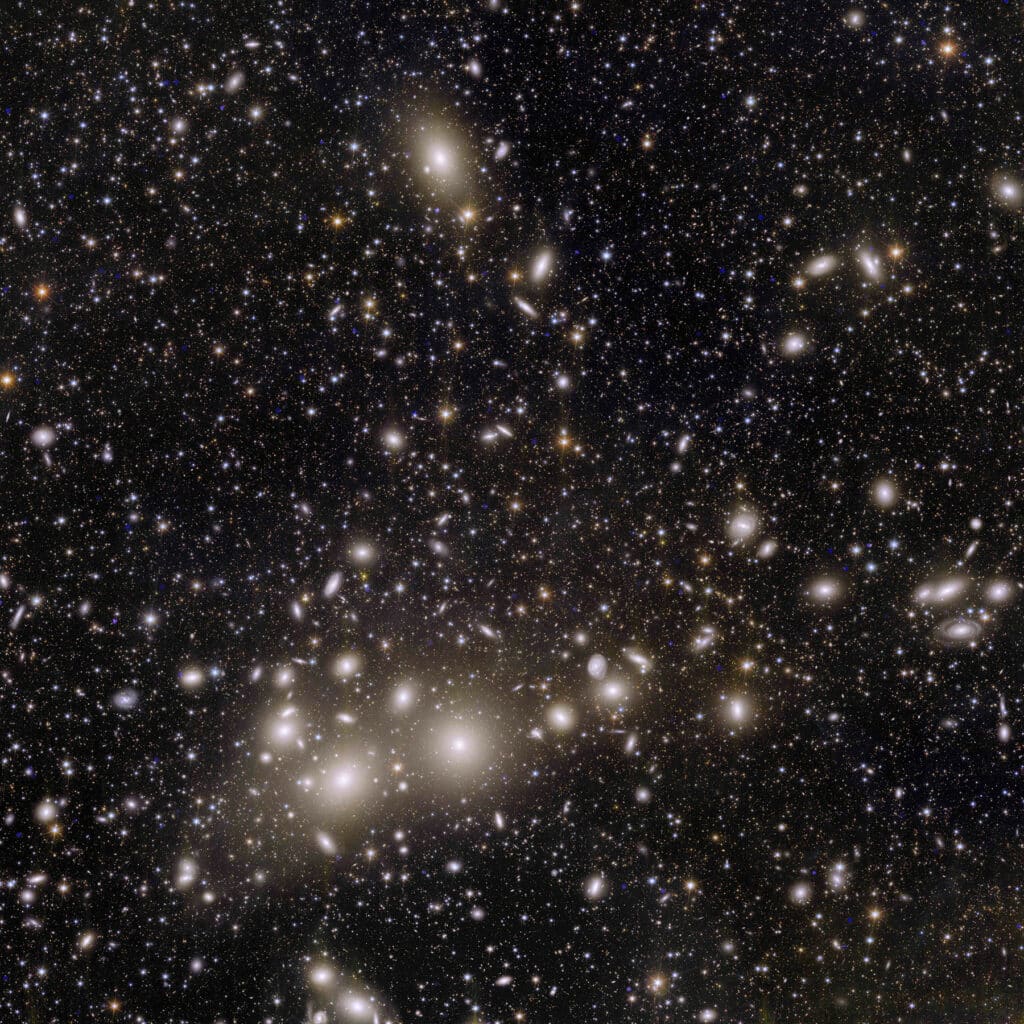
For the first time, scientists have caught so many Perseus galaxies in such clarity thanks to an image this size. One of the most significant known structures in the Universe, Perseus is “only” 240 million light-years from Earth and is home to billions of galaxies submerged in a giant cloud of hot gas. Scientists have shown that the existence of dark matter in the Universe is a prerequisite for the formation of galaxy clusters such as Perseus.
The faint light that exists between galaxies in the cluster’s nucleus is another significant aspect of Euclid’s image of Perseus. The free-floating stars that result from interactions between galaxies are responsible for this luminosity. By analyzing this intra-cluster light, scientists can learn more about the cluster’s history. It also illustrates the distribution of dark matter.
Spiral galaxy IC 342
Called the “Hidden Galaxy,” it is one of the earliest galaxies that Euclid observed. This galaxy, also known as IC 342 or Caldwell 5, is complex because it is hidden by the Milky Way‘s busy disc, which blocks our view with dust, gas, and stars.
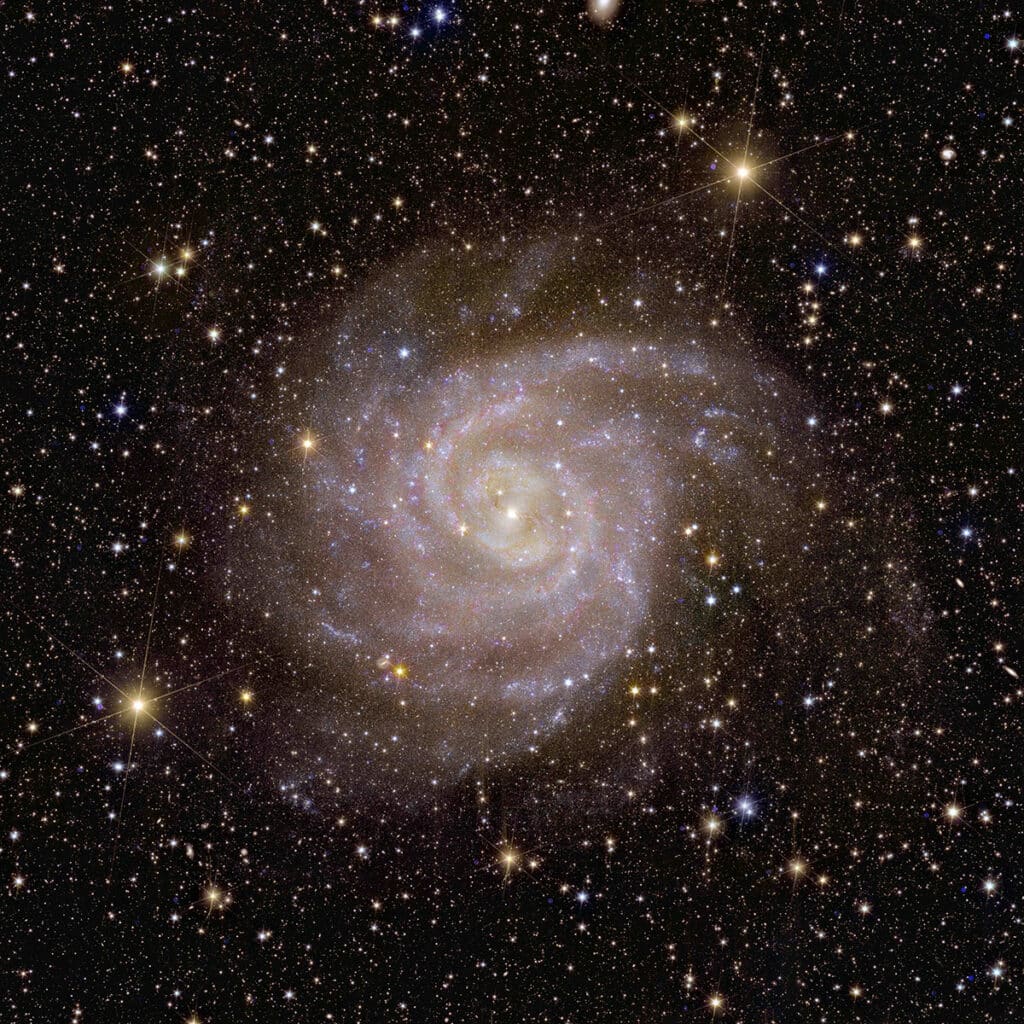
Euclid’s extraordinary sensitivity and excellent optics allowed it to capture this beautiful and sharp image. The crucial aspect is that Euclid measured the light emitted by the numerous cold, low-mass stars that make up most of the galaxy’s mass by looking through the dust with its near-infrared instrument.
IC 342 is extremely close to our galaxy (in terms of astronomical distances), at around 11 million light-years from Earth. It fills the sky to the size of the full Moon. It is a spiral galaxy.
Irregular galaxy NGC 6822
NGC 6822, the first irregular dwarf galaxy that Euclid observed, is a nearby galaxy only 1.6 million light-years away from Earth. It belongs to the Local Group, the same galaxy cluster as the Milky Way.
Since then, NGC 6822 has been spotted several times, most recently with the NASA/ESA/CSA James Webb Space Telescope. However, in less than an hour, Euclid is the first to take a high-resolution image of the entire galaxy and its surroundings.
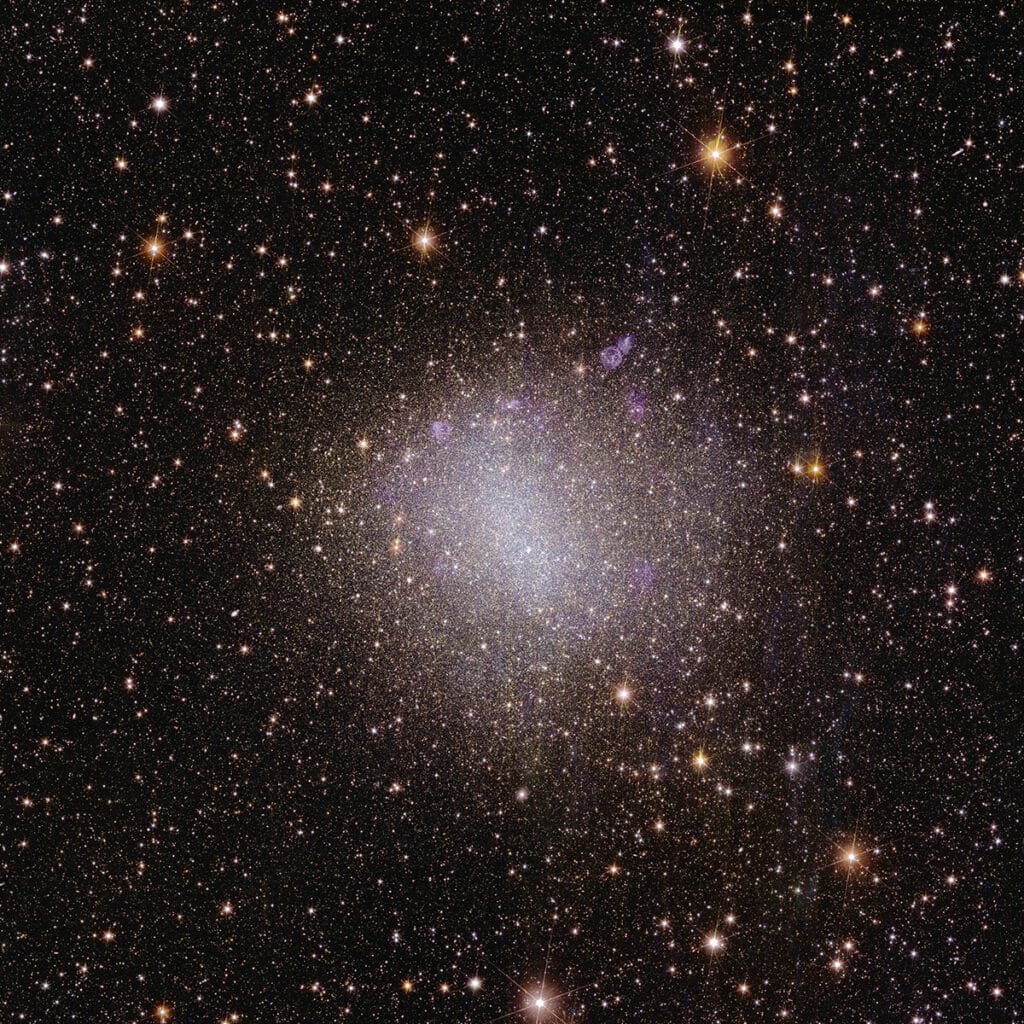
The low amounts of elements other than hydrogen and helium in the stars of this galaxy are an intriguing feature. Since stars develop these heavier, “metal” elements during their lives, they were uncommon in the early Universe.
Euclid Consortium scientist Leslie Hunt of the National Institute for Astrophysics in Italy said, “By studying low-metallicity galaxies like NGC 6822 in our galactic neighborhood, we can learn how galaxies evolved in the early Universe.”
Globular cluster NGC 6397
Euclid’s view of the NGC 6397 globular cluster can be seen in this glittering picture. The second-closest globular cluster to Earth is NGC 6397, roughly 7800 light-years away.
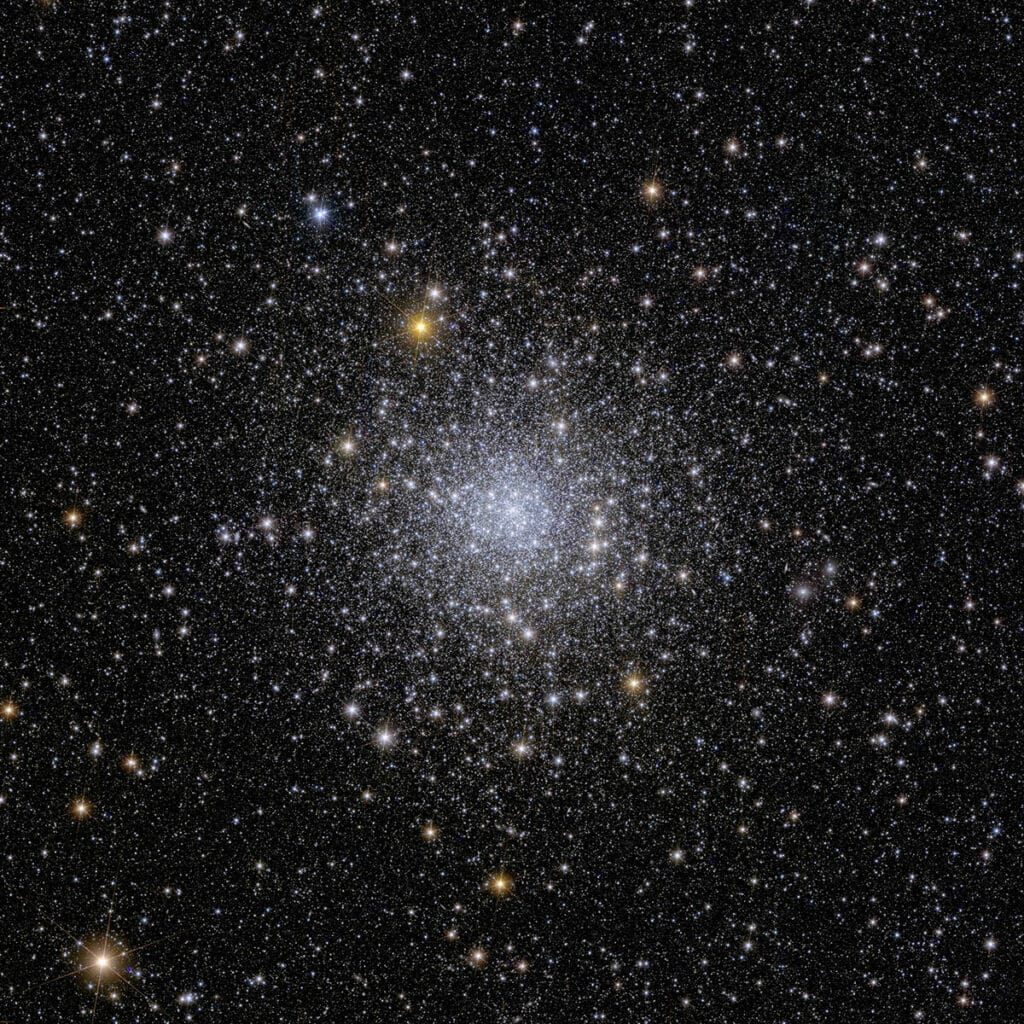
Euclid Consortium scientist Davide Massari of the National Institute for Astrophysics in Italy said, “Currently, no other telescope than Euclid can observe the entire globular cluster and at the same time distinguish its faint stellar members in the outer regions from other cosmic sources.”
The Horsehead Nebula
The Horsehead Nebula, sometimes called Barnard 33 and a component of the constellation Orion, is shown in an astoundingly detailed and panoramic picture by Euclid. The Horsehead region is the nearest major star-forming area to Earth, located at a distance of roughly 1375 light-years. It is located directly south of the star Alnitak.
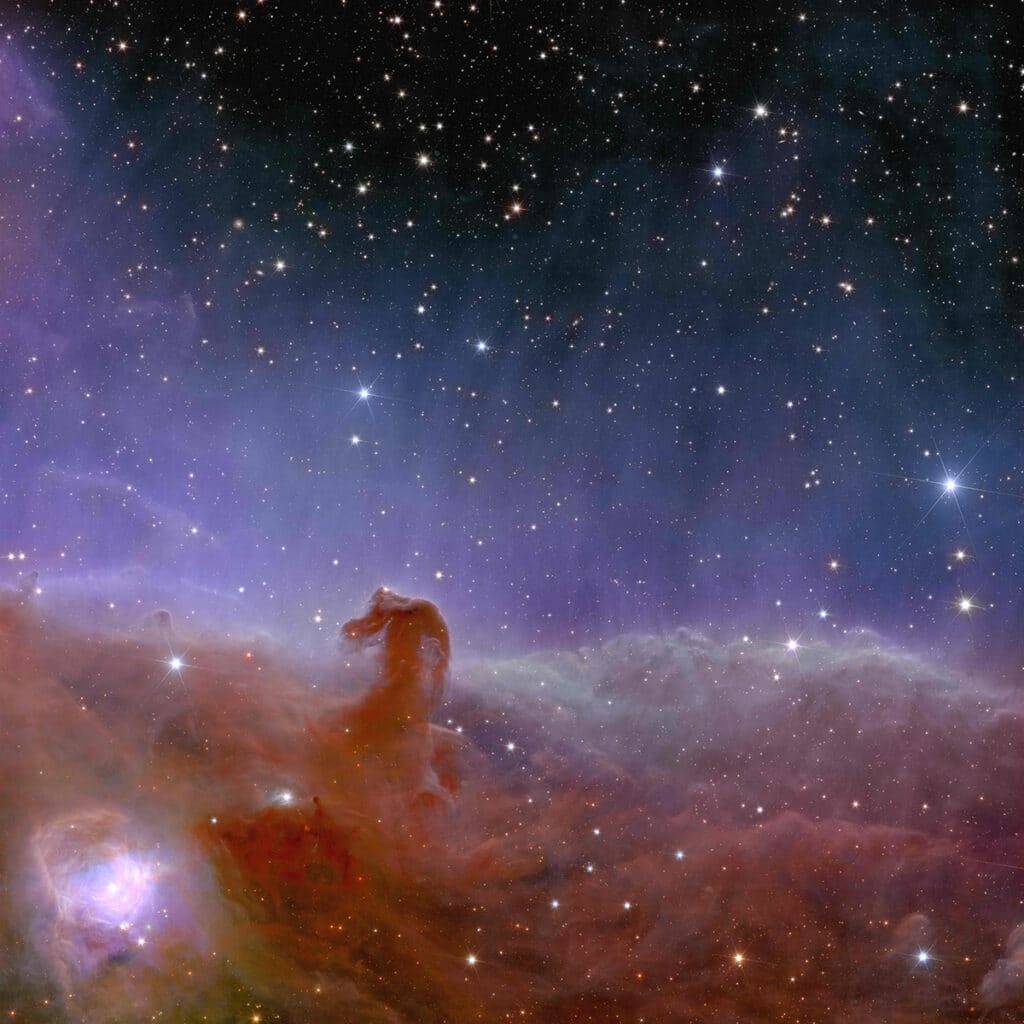
This hour-long view of the Horsehead, taken by Euclid, demonstrates how rapidly and in great detail the mission could image an unprecedented region of the sky.
More discoveries
Yannick Mellier, Euclid Consortium lead, said, “In the coming months, scientists in the Euclid Consortium will analyze these images and publish a series of scientific papers in the journal Astronomy & Astrophysics, together with papers about the scientific objectives of the Euclid mission and the instrument performance.”
